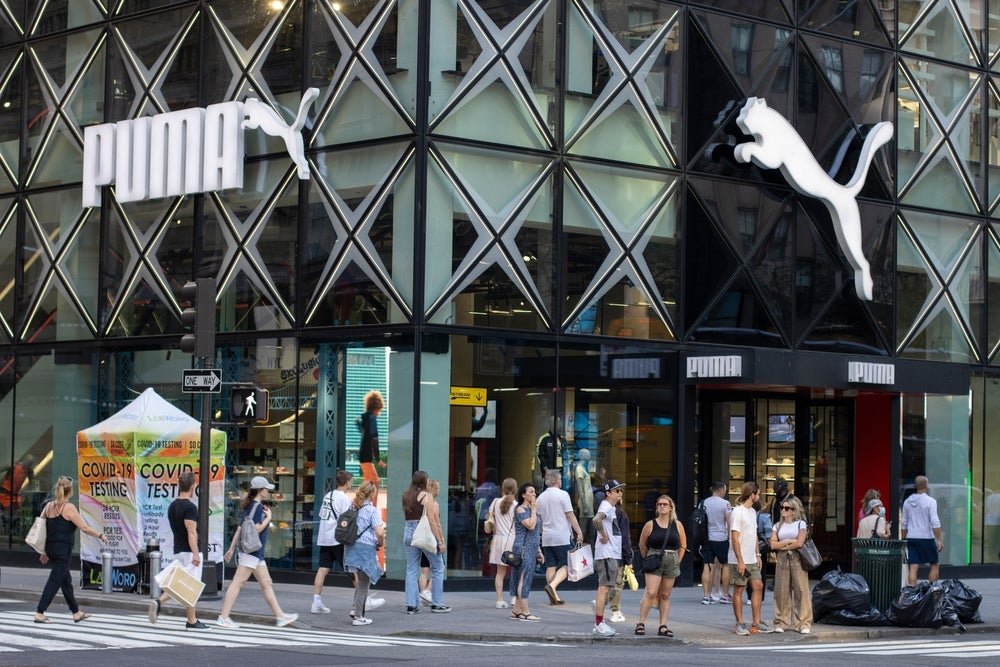Two fifths (40%) of fashion brands have seen their emissions output increase since making their commitments to decarbonise, according to an analysis by research company McKinsey & Co.
The research also highlights that the global fashion industry accounts for an estimated 3% to 8% of total greenhouse gas (GHG) emissions, and the industry’s emissions are expected to increase by around 30% by 2030 if no further action is taken.
McKinsey explained that many of the countries likely to experience the greatest devastation from climate change remain central to fashion’s supply chain.
It stated: "Intense and frequent weather-related events occur in primary manufacturing countries — such as Bangladesh, China, India, and Vietnam — which export an estimated $65bn worth of apparel."
The report also suggested that most fashion brands could reduce their GHG emissions with only a minimal impact on their revenues. It added that this excludes levers related to reselling, renting and repairing fashion, which would reduce a brand’s emissions intensity significantly but is also dependent on consumer behaviour shifts.
The fashion brands included in the analysis had committed to reducing Scope 1 and 2 emissions by about 55% and Scope 3 emissions by about 35% by 2030. To assess each brand’s progress on Scope 3 emissions, McKinsey compared brands’ historical rates of emissions reduction with the pace of change required to reach their emissions targets.
Despite ongoing efforts, the report said "brands are struggling to keep pace with their decarbonisation targets".
It added: "Our analysis has found that two in five brands have seen their emissions intensity increase. Only 37% are on track to reach their 2030 decarbonisation goals, assuming they continue to reduce their emissions intensity at their current paces. The remaining 63% of brands in our analysis will need to accelerate their abatement action if they are to reach their 2030 targets."
How fashion brands can overcome decarbonisation challenges to become more sustainable
Create commercial value from sustainability strides
Understand precisely what your consumers care about with respect to sustainability to determine your distinct brand and value proposition. Work actively at every level—including corporate, brand, and product—to translate achievement of those sustainability goals into powerful, consumer-facing offers that can build brand equity. This could include emphasizing information about a product’s materials. Brands could also create compelling offers for net-zero product lines, radical supply chain transparency, industry-leading decarbonization targets, or circular business models. These offers must be rooted in fact.
Focus on material transition and tier-two-supplier energy transition
Fashion businesses rely heavily on fossil-fuelled energy in primary manufacturing countries, transforming fibres into garments represents about 70% of emissions; most of these emissions come from fabric production (mostly dyeing and wet processing) and fibre production.
Innovative green materials — including cotton replacements, recycled materials, and bio-based leather alternatives — are becoming more widely available at lower costs. The most promising materials require minimal compromise in performance and little, if any, additional cost once supply scales. Using green materials also helps create more commercial value and develop cost efficiencies.
To reduce emissions at material processing facilities, the report suggested fashion brands could work with their suppliers on energy efficiency improvements, energy production technology shifts (such as switching production technology to solar or industrial heat pumps), and renewable-electricity accessibility. To do so, brands could move toward a more strategic sourcing strategy focused on a higher degree of consolidation and close supplier engagements.
Build a carefully prioritised and robust roadmap
A well-defined roadmap could answer both the “what” and “how” to transform a fashion business’s decarbonisation strategy faster and at a lower cost. Start by creating a detailed view of emissions baselines and decarbonisation levers. Then, prioritise and order actions based on abatement potential, cost, speed and commercial value.
The report urges fashion brands to use a marginal abatement cost curve, which compares the abatement potential and cost of each lever.
Executives who choose to take an ambitious approach to building their roadmap can benefit from becoming market leaders. A new and more strategic sourcing approach, for example, could reduce emissions more than a fragmented, piecemeal approach.
Get granular on data
Access to reliable data is essential if fashion businesses are going to progress through their decarbonisation journeys, comply with sustainability regulations, and provide sustainability information to consumers. Brands must move from industry-average data to primary data. Primary data offer more precise, brand-specific insights about emissions baselines, levers, and progress. This will require partnerships with leading traceability and impact measurement providers and close collaboration with suppliers.
Boost execution and transformation management
To overcome the execution challenges in a sustainability transformation, businesses could draw on the transformation playbook used for achieving higher margins or reducing costs. This means going from a softer approach, with top-level sustainability targets and a dedicated team but no solid transformation plan, to an action-based approach.
The senior executives leading this team can be made accountable for its progress, assign tasks to various leaders within an organisation, and create a rigid transformation plan with systematic progress tracking and clear governance in place.
Make collaborations action-oriented
The entire fashion ecosystem will need to collaborate if the industry’s decarbonisation goals are to become a reality, McKinsey said. Brands with meaningful supplier overlaps, for example, could jointly define decarbonisation pathways and create a critical mass to invest in supplier decarbonisation initiatives.
Collaborating on initiatives, such as increasing suppliers’ access to renewable energy, could lead to more impactful changes than if a brand were to pursue smaller-scale initiatives on its own. Brands could also collaborate with financial institutions to help suppliers get better access to sustainability-linked financing.
Fashion brands' opportunity to decarbonise is time critical
McKinsey concluded by explaining that "time is of the essence" for creating substantial business value in sustainable transformations.
It noted that early movers could realise commercial value and positive effects on brand equity for years to come.
McKinsey also believes there is an early-mover advantage on the cost side: "While the cost of sustainable solutions will likely fall over time, we expect that a widening supply-and-demand gap in the near term will increase the price of scarce sustainable solutions and assets, including materials, machinery needed for decarbonisation, renewable energy, and manufacturers with more sustainable processes.
"Moving early can help a brand secure access at lower prices than its peers can and reach its 2030 decarbonisation targets."
McKinsey's State of Fashion report, which was published in 2023, revealed frequent extreme weather events could threaten an estimated one million jobs in Bangladesh, Cambodia, Pakistan and Vietnam.
















